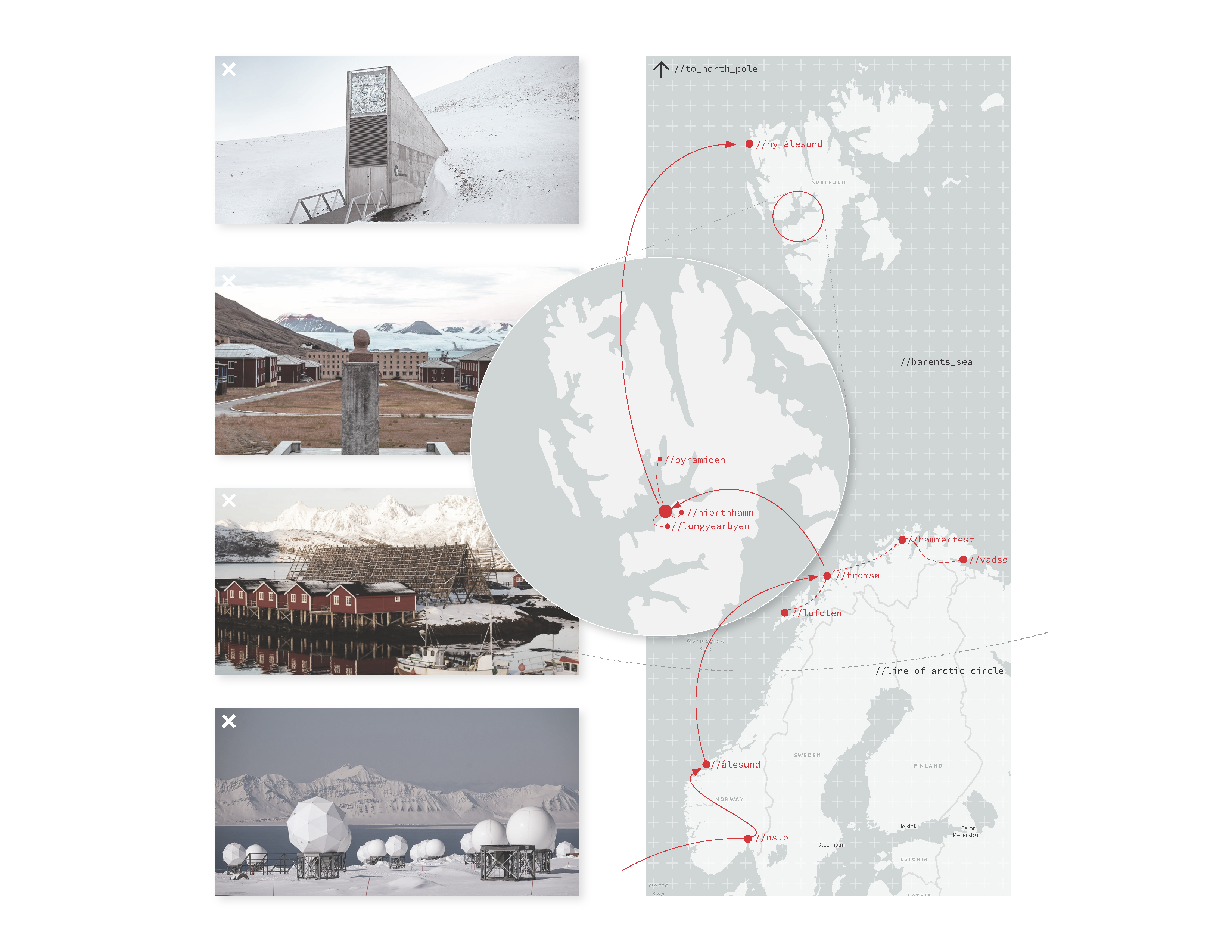In-Svalbard: Futurist Archives at Work Above the Arctic Circle
[2024] George G. Booth Travel Fellowship
critical matters: latent typologies, infrastructures of extraction, climate change
External Links
Press Release ︎︎︎
Proposal PDF ︎︎︎
Full Project Website
coldcoastatlas.cargo.site ︎︎︎
Press Release ︎︎︎
Proposal PDF ︎︎︎
Full Project Website
coldcoastatlas.cargo.site ︎︎︎

The George G. Booth Travel Fellowship is an award eligible to recent M.Arch alumni at U-M Taubman College. The Fellowship is designed to enable career-orienting research of architecture that requires international travel.
The Booth Fellow is required, within six months following the completion of travel, to submit a written report (hard copy and electronic versions). Additionally, this site will be used to actively document travel and research reports produced in keeping with Fellowship requirements.
For more information about this Fellowship, please visit Taubman College’s information page. ︎︎︎
︎
Proposal
North of Norway + East of Greenland, a sovereign island sits in the Barents Sea, a place anyone can visit without the need for a visa. Svalbard, a heterotopia of modernity, is uniquely situated at the precarious intersection of climate crisis, past + present resource extraction, double-edged geopolitical ‘neutrality’, and global archivist practices. Located above the Arctic Circle, and in close proximity to the North Pole, Svalbard is the single most threatened place on earth due to anthropocentric-driven climate change, warming at a rate six times faster than anywhere else. Its landscape is riddled with architectures that respond to this issue: vaults dedicated to preserving biodiversity, satellite farms actively reporting rising water levels, and local building methodologies that utilize raised plinths in response to dynamic ground conditions, among others.
In-Svalbard is a proposal foregrounding both Preservation + Projection. The applicant’s aim is to analyze ongoing and planned archivist practices for futurity, efforts that race against the clock seeking to somehow document the very culture that threatens to erase it. Analysis and documentation will occur through the use of traditional photo documentation, photogrammetry, and map-making, ultimately compiling these items within a compendium: the Arctic Actant Atlas. The aforementioned items will be included alongside writings in the form of a travel journal, styled after a lineage of similar documents ranging from the 17th century to the present.
This proposal is a continuation of research conducted as part of the applicant’s thesis, and contributes to their larger exploration of responsive architecture typologies and adaptive reuse of past sites of extraction.
︎
Methodology
The research is staged in four parts, each corresponding to a specific aspect of the aforementioned futurist archives and responsive typologies. While these correlate to different subregions of travel and are indicated within the itinerary, it is anticipated that there will be gradient of categorical occurrences throughout the course of travel:
01: ’Architectures of Adaptation’
This area indulges in the exploration of boathouses, fisherman’s cottages, and other typologies that utilize Pier + Plinth to adapt to ever-changing coastlines.
02: ’Territorial Typologies’
Aims to capture infrustructures left behind from eras of exploration and resource extraction; these vestiges speak to a relationship with the land as well as the tools and systems of navigation and knowing.
03: ’Ephemerality + Archives’
Classified as architecture that attempts to preserve some aspect of culture and environment, especially in moments of fragility.
04: ’Forward Reflections’
Details sites that engage with memorial as archive while simultaneously conducting research in anticipation of the future.
The compendium which compiles photo documentation, photogrammetry (where possible), and travel journal reflections will be curated and created into a web-resource for reference as open-source knowledge. The website developed will be archived and submitted to the Arctic World Archive, currently operating as an internet archive within the repurposed Gruve 3 mineshaft in Longyearbyen.
Most importantly, this research seeks to learn from the past and present, extrapolating/mobilizing that knowledge as a network for future use.
︎
Full Project site can be found at coldcoastatlas.cargo.site